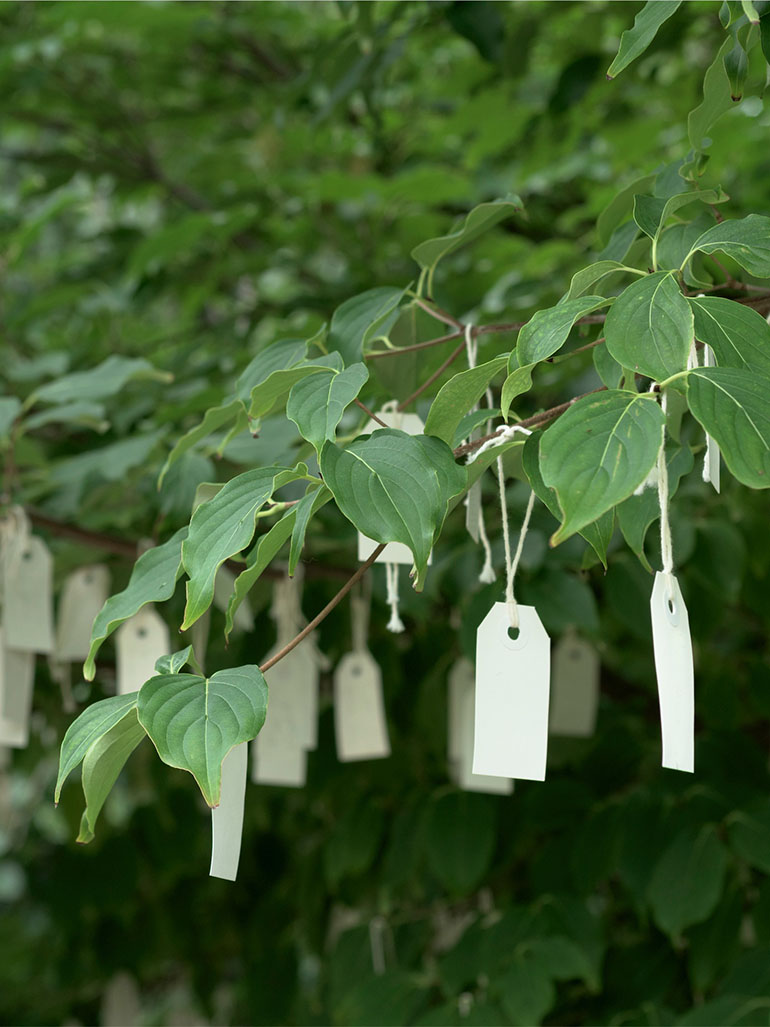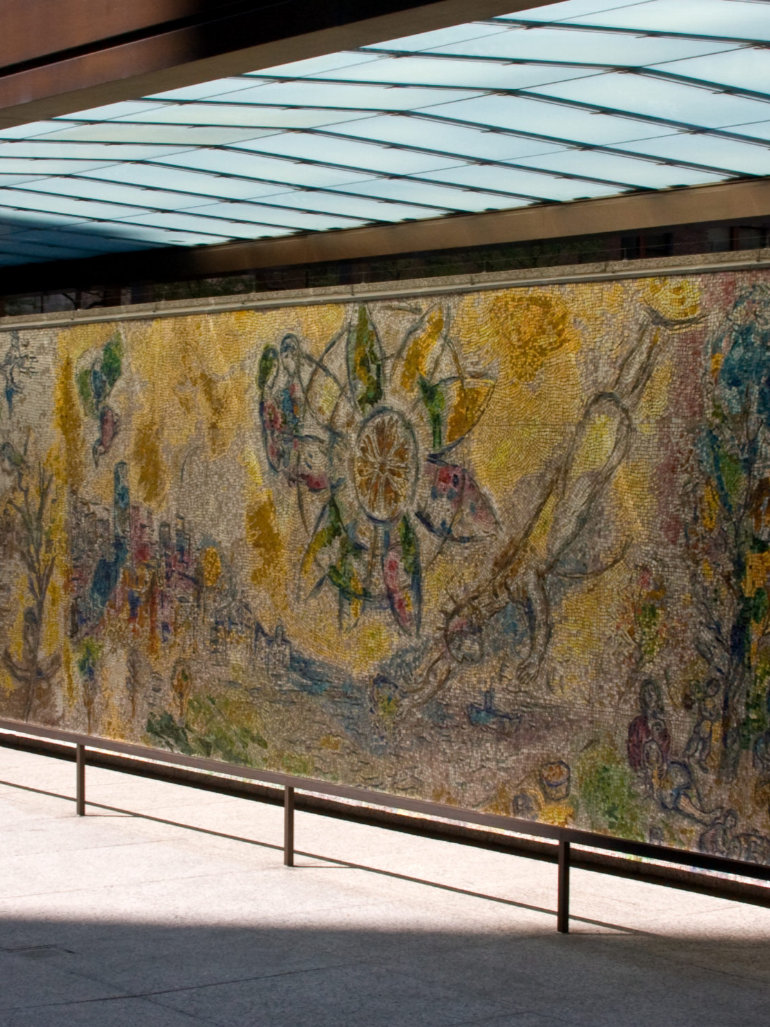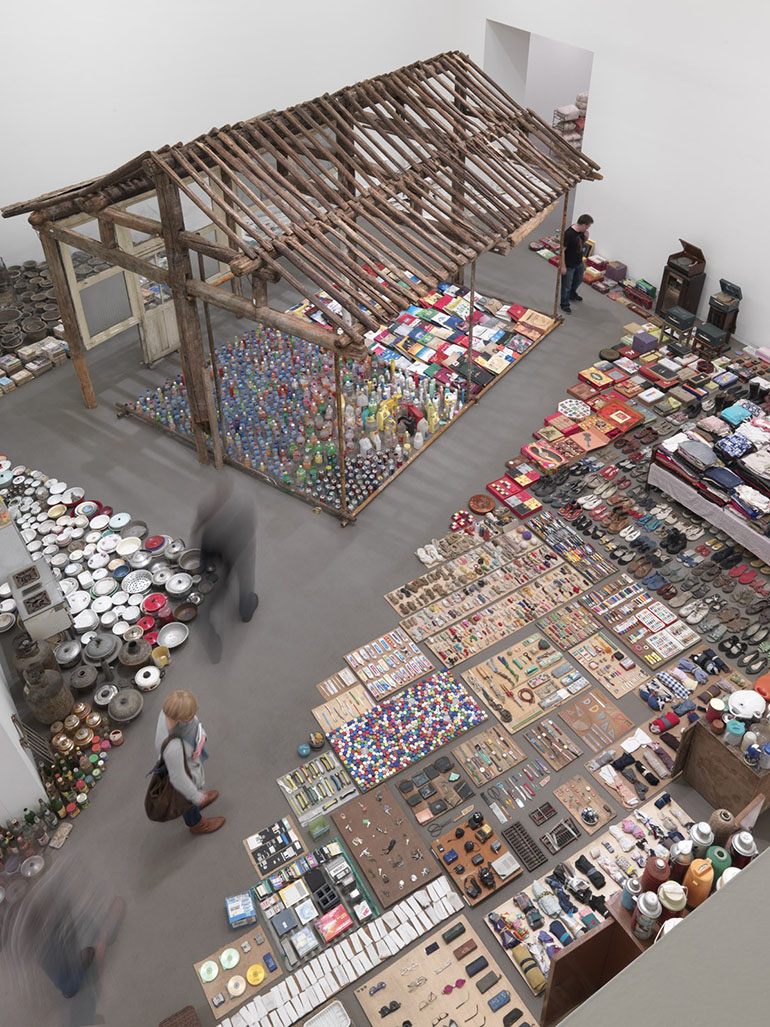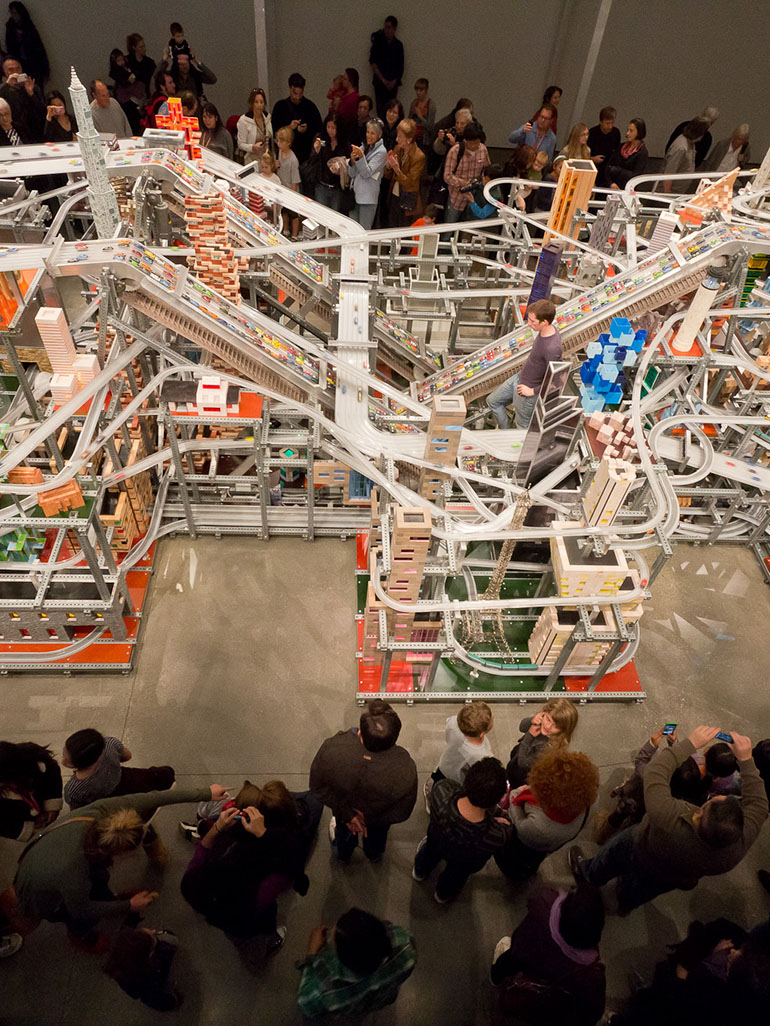
Permanently closed
This monumental installation was displayed in Zurich's main train station in 2018. It has since been dismantled and is no longer accessible.
Introduction
In 2018, the atrium of Zurich’s 1 main station basked in the glory of a giant, colorful 2 installation by the Brazilian contemporary artist Ernesto Neto 3. The huge Amazon tree-like sculpture stretched from the ceiling to the floor of the Swiss 4 central station, helping set the mood and brighten the travelers’ spirit.

It is the star artist’s most stand-out accomplishment of this kind and was packed with stimulating spirituality. Meet the 20-meter high Gaia Mother Tree, which welcomed you into an oasis of meditation in its walk-in interior, with a high-flying contraption of spices towering above the station’s concourse.

Gaia Mother Tree
Gaia Mother Tree was a one-of-a-kind art installation and collaborative 5 work of the Brazilian artist Ernesto Neto and Swiss-based Fondation Beyeler 6. As well as this public installation 7, the Fondation Beyeler exhibited some of the artist’s previous artworks in its main exhibition hall in Zurich.
Gaia Mother Tree was a monumental sculpture comprising colorful, hand-woven cotton strips. The installation soared a dizzying 20 meters to the ceiling of the elevated station concourse, which made it look like a massive tree 8 from the Amazon forest.

This monumental marvel was a walk-through sculpture that served as a spot for meditation, interaction 9, and meeting. The installation also hosted a schedule of diverse events for children and adults, including lectures, workshops, meditations, music, and guided commentary of Neto’s works.
Design & materials: 420 kg of spices
Right off the bat, the most impressive thing about Gaia Mother Tree is that it’s entirely hand-made. Colorful cotton strips were hand-knotted together using finger crotchet technology, creating a massive sheer sculpture. The top part of the structure, resembling a treetop, covered the station hall’s ceiling.

The lower part of the sculpture, in the form of a tree base, had a spacious room with a circular seating array for travelers to sit, relax, and meet. Drop-esque counterweights packed with seeds and aromatic spices from across the globe dangled from the “tree branches”.

In fact, the drop-like elements were filled with well over 420 kilograms (926 pounds) of ground, aromatic spices. They served numerous purposes: the spices filled the ambient station atmosphere with fragrance, gave a whole meaning to the installation, and ensured the large, mesh-like sculpture stayed in place.

In total, Neto and his team used 70 kilograms (around 154 pounds) of each black pepper and cumin and 140 kilograms (about 308 pounds) of each clove and turmeric. They all hovered above the walk-in room in the colossal trunk of the tree, inviting locals and visitors alike to linger. Pots filled with sweet-smelling herbs and meditation cushions organized in a circle planted this sanctuary smack dab in the center of the vibrant station hall.

Um Sagrado Lugar (A sacred place) shown at the 2017 Venice Biennale 10 provided a preview of this masterpiece, which was one of the biggest creations yet constructed by Neto utilizing this knotting technique. Neto created a spiritual gathering space in the Arsenale with a similar but much smaller net-like installation that was crafted in collaboration with members of the Brazilian indigenous Huni Kuin tribes.
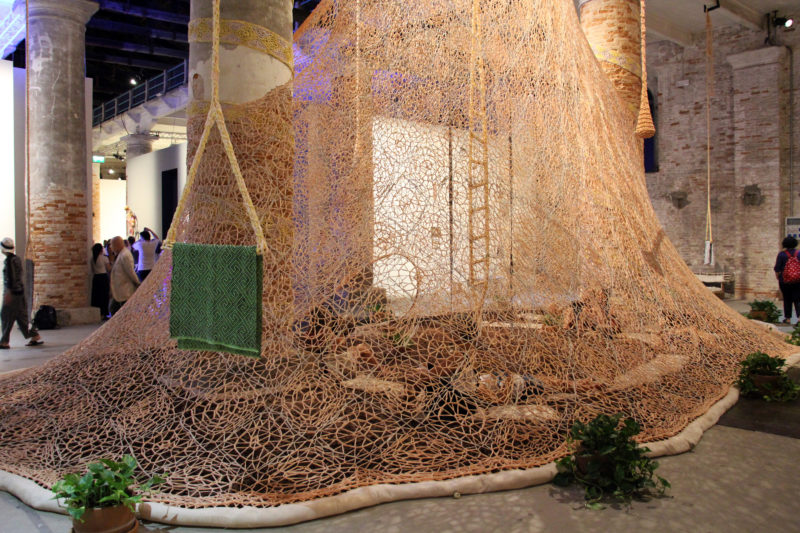
Concept & interpretation
Since 2013, Ernesto Neto’s work has included Huni Kuin’s technical aesthetics and techniques. Beyond all else, Neto’s art has been influenced by the indigenous people’s innate spirituality ever since.
This also applies to his 2018 huge throw, whose title carries the moniker of the primeval mother earth because we are all tied to Gaia by an unseen umbilical cord. Perhaps this should occur to us in light of Neto’s enchantingly floating knotted piece at Zurich’s central station.
But Gaia Mother Tree can’t be effectively described from the outside – you must have experienced and immersed 11 yourself inside — after, we are all also going to live in this tree. It’s as if people were crawling through a bamboo birth canal and colorful fabric ribbons into the womb of the Gaia tree, which seems like it was transplanted here from the Brazilian rainforest.

And you could sit in there, comfortably safe and yet connected to the environment through the see-through-ness of the knitted cover, which remained present around us acoustically and visually.

Meditation became contact with the all-encompassing urban buzz that can only be experienced in an ever-busy railway station concourse under the mother tree. The delicate wafts of aroma from the spice counterweights hanging 12 down like lianas assured you were there and yet a bit isolated from the frenetic everyday life at the station.

This paradoxical simultaneity of elsewhere yet here made us feel more connected, which is what the artist’s installation perhaps also symbolizes in the grand scheme of things. But maybe it is simply the fragrant spice blend that makes you hallucinate a little. Either way, Neto’s Gaia Mother Tree is right on the money.
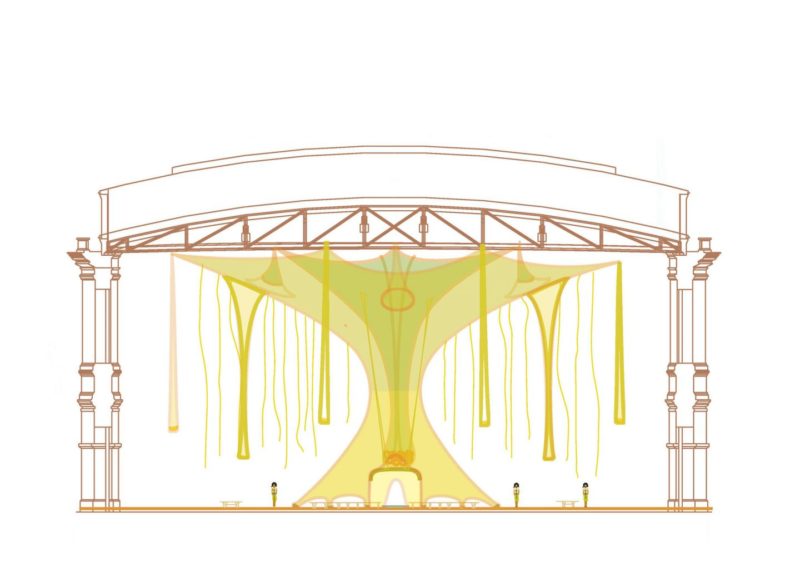
Gaia Mother Tree examined how the collaborative efforts 13 reflected in the project are at the core of the dialogue about our planet’s future in a context where cultural ideas, projections, and misconceptions are ever-migrating.
About the Artist: Ernesto Neto
Born in 1964 in Rio de Janeiro, Brazil 14, Ernesto Neto is one of Brazil’s most acclaimed contemporary artists and, indeed, the rest of Latin America. He broke into the limelight in the 1990s with highly-attractive biomorphic hanging stockings filled with aromatic spices.
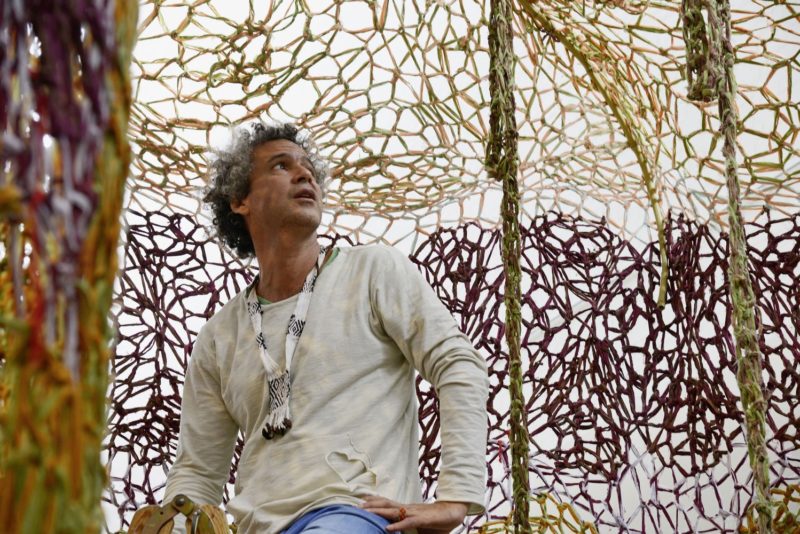
His work has been recognized across the globe, with numerous exhibitions in the world’s best museums, including multiple presentations at Venice Biennale. Neto’s significant artworks are part of permanent collections of many art galleries and museums, including the Hara Museum, Tokyo; the Centre Pompidou 15, Paris; the Tate Modern 16, London; the Solomon R. Guggenheim Museum 17 and Museum of Modern Art 18, New York, among others.

His concepts were mainly inspired by the 1960s Brazilian Neo-Concrete movement, not to mention Arte Povera 19, Conceptual art 20, and Minimalism 21. Ecology, humanism and spirituality are some of his main topics, often communicated through techniques and materials never seen before in art.




